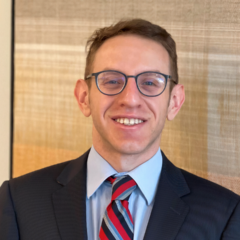One of many important and ominous themes of the Supreme Court’s most recent term is the conservative majority’s effort to strip away a constellation of already-weakened post-conviction remedies for individuals who suffer injustice at the hands of the criminal legal system. In a series of decisions limiting Miranda rights and habeas relief, the Court has compromised avenues for redress available to individuals who have suffered police abuse or who have been wrongfully convicted. While these decisions involve distinct legal doctrines, taken together, they contribute to a broader pattern: Increasingly, the Court threatens to allow police, attorney and court bias go uncorrected with relative impunity.
In Vega v. Tekoh, the Court ruled 6-3 that when a police officer violates an individual’s Miranda rights – by failing to inform them that they have a right “to remain silent” and to an attorney – the individual suffering the violation may not later sue the officer for damages in a Section 1983 civil rights suit. While an individual can object to the introduction of statements made without Miranda warnings in court, if their lawyer makes no such objection, they may not pursue a civil suit after the fact – even if they are found not guilty. Or even, as Justice Kagan notes in her dissent, if “as a result, a defendant [is] wrongfully convicted and spend[s] years in prison.” In this case, Officer Carlos Vega detained Terrance Tekoh, who confessed to sexual assault allegations under a strenuous interrogation without receiving proper a proper Miranda warning and was later acquitted. The Supreme Court majority held that Miranda is merely a “prophylactic” constitutional rule, not a constitutional right. The decision leaves clients accused of crimes – particularly if they are young and susceptible to coercion in interrogation – open to abuse that cannot be fully remedied after the fact. As Justice Kagan writes, the majority “injures the right by denying the remedy.”
In addition to injuring bedrock Miranda rights, the Supreme Court restricted habeas rights this term. Historically, prisoners and detainees may use the writ of habeas corpus to challenge an unlawful detention in federal court. For wrongfully convicted individuals and others facing unjust sentences, habeas provides an avenue for relief when the state court system offers no viable options. But in Brown v. Davenport, the Court found that in order to receive habeas relief, a court must apply two separate legal tests. Here, Ervine Davenport was visibly shackled in front of the jury during his initial criminal trial for first degree murder. He sought habeas relief, arguing that the shackles had biased the jury and violated due process, after exhausting his state appeals. While the Sixth Circuit granted relief, the Supreme Court found that the circuit court should have also considered the additional restrictions on habeas relief imposed by the Antiterrorism and Effective Death Penalty Act of 1996.
And in Shoop v. Twyford, the conservative majority limited federal courts’ ability to transport prisoners to investigate the validity of their convictions. There, Raymond Twyford, a prisoner on death row in Ohio, sought neuroimaging and other medical testing to challenge his conviction. But the Court determined that federal courts could not use federal law to legally mandate this medical analysis. Mr. Twyford will never know whether medical testing would uncover evidence that could, ultimately, save his life.
And perhaps most concerningly of all, in Shinn v. Ramirez, the court held that new evidence – evidence which is absent from initial records because of attorney error – cannot be introduced in a federal habeas appeal. A federal court may only consider evidence already in the state record, no matter how shabby and incomplete that record is. And again, even if the evidence could exonerate a client on death row.
People interrogated by police, tried in our country’s courts, and convicted of crimes deserve protections from officials’ abuse and biases. And when our legal system wrongfully convicts innocent people, those individuals deserve recourse. The current Supreme Court has systematically interrupted relevant protections. Brown, Goldstein & Levy is committed to fighting for relief for clients who have experienced police abuse and who have spent time paying for crimes they did not commit – even when the fights are hard.
Our special thanks to Madeline Walsh, BGL summer associate, who researched and substantially drafted this blog post. At the time of publication, Madeline is a third-year law student at Stanford Law School. She previously worked at Orleans Public Defenders, CUNY School of Law’s Main Street Legal Services, and the Berkshire Immigrant Center.
